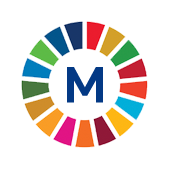 6.5.1 Degree of integrated water resources managementMetadataPeriod: Every three yearsYear: 2025 |
 6.5.1 Degree of integrated water resources managementMetadataPeriod: Every three yearsYear: 2025 |
| METADATA |
| Indicator information |
| Definition and methodology |
| Data source type and data collection method |
| Notes |
| ID of global indicator |
| Metadata update |
| Global metadata |
| Indicator information | Top |
| Indicator | |
6.5.1 Degree of integrated water resources management | |
| Global indicator name | |
6.5.1 Degree of integrated water resources management | |
| Target | |
6.5 By 2030, implement integrated water resources management at all levels, including through transboundary cooperation as appropriate | |
| Goal | |
Goal 6. Ensure availability and sustainable management of water and sanitation for all | |
| Definition and methodology | Top |
| Definition | |
Indicator 6.5.1 is ‘degree of integrated water resources management implementation’. It measures the stages of development and implementation of Integrated Water Resources Management (IWRM), on a scale of 0 to 100, in six categories (see Rationale section).
The indicator score is calculated from a country survey with 33 questions, with each question scored on the same scale of 0-100. The definition of IWRM is based on an internationally agreed definition, and is universally applicable. IWRM was officially established in 1992 and is defined as “a process which promotes the coordinated development and management of water, land and related resources in order to maximise economic and social welfare in an equitable manner without compromising the sustainability of vital ecosystems.” (GWP 2010). The method builds on official UN IWRM status reporting, from 2008 and 2012, of the Johannesburg Plan of Implementation from the UN World Summit for Sustainable Development (1992). | |
| Methodological explanations | |
The indicator score provides an easy and understandable way of measuring progress towards the target, with ‘0’ interpreted as no implementation of IWRM, and ‘100’ interpreted as IWRM being fully implemented. | |
| Method of calculation | |
1. The survey contains 33 questions divided into the four main sections described above.
Where question is not applicable, n/a can be selected as a reply, providing adequate explanation. Note that more question-specific guidance is provided for each threshold for each question, to ensure objective and comparable results.
3. The un-weighted average of the question scores within each of the four sections is calculated to give a score of 0 – 100 for each section, rounded to the nearest whole number. Questions with response n/a are omitted from calculation. | |
| Unit of measure | |
% | |
| Available disaggregation | |
| Territorial level | |
Republic of Serbia | |
| Data source type and data collection method | Top |
| Data source | |
IWRM Data Portal, UNEP | |
| Periodicity of data collection | |
Every three years | |
| Notes | Top |
| ID of global indicator | Top |
C060501 | |
| Metadata update | Top |
| 5/6/2025 | |
| Global metadata | Top |
https://unstats.un.org/sdgs/metadata/files/Metadata-06-05-01.pdf | |